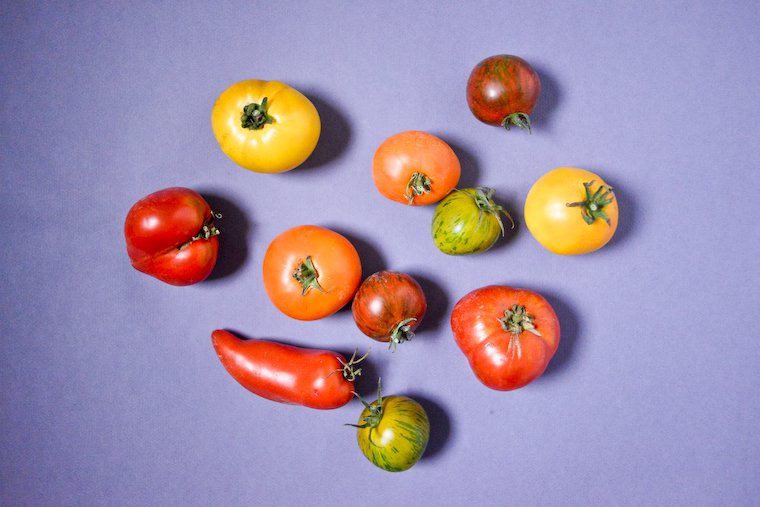I grew up eating haricots verts steamed to army green softness and served warm, with a bit of butter and freshly chopped parsley, usually as a side to roast chicken for Sunday lunch. After coming home from the greenmarket — with or without me tagging along — my mother would call across the apartment, “Il y a des haricots verts à éplucher !” (There are green beans to trim!)
My father, my sister and I would then pop out of our respective bedrooms and office to gather on the floor around the coffee table where a tray awaited, with a big pile of untrimmed beans and a colander to collect them once trimmed. It was understood that us kids could be excused from this if we had a big test to study for, but we seldom used that Get Out of Jail Free card, welcoming instead the opportunity to take a break and chat as our fingers busied themselves.
Green beans pair beautifully with summer fruit (“What grows together goes together”) and I love them topped with finely diced cantaloupe, or thinly sliced peaches and nectarines.
Looking back, I realize we could have cut down the workload in half by trimming the only end that actually needs trimming — that would be the stem end, the wispy tail is in fact harmless — but trimming both ends allowed us to thoroughly de-string the beans along each side, which counts for something.
In my own kitchen I mostly find myself eating green beans cold, in zesty salads such as this one. Green beans pair beautifully with summer fruit (“What grows together goes together”), and I love them topped with finely diced cantaloupe (it’s been such a fabulous year for French melons!) or thinly sliced peaches and nectarines, which I’ve come to like best white.
My salad had a “green” element and a “sweet” element, and to create a more complete balance of flavor with “nutty” and “savory” notes, I decided to throw together a batch of homemade gomasio — a Japanese condiment of toasted sesame ground with sea salt — to which I added ground chipotle pepper for an extra kick. It is very easy to make at home and incomparably more flavorful than anything you can buy at the store.

Continue reading »











